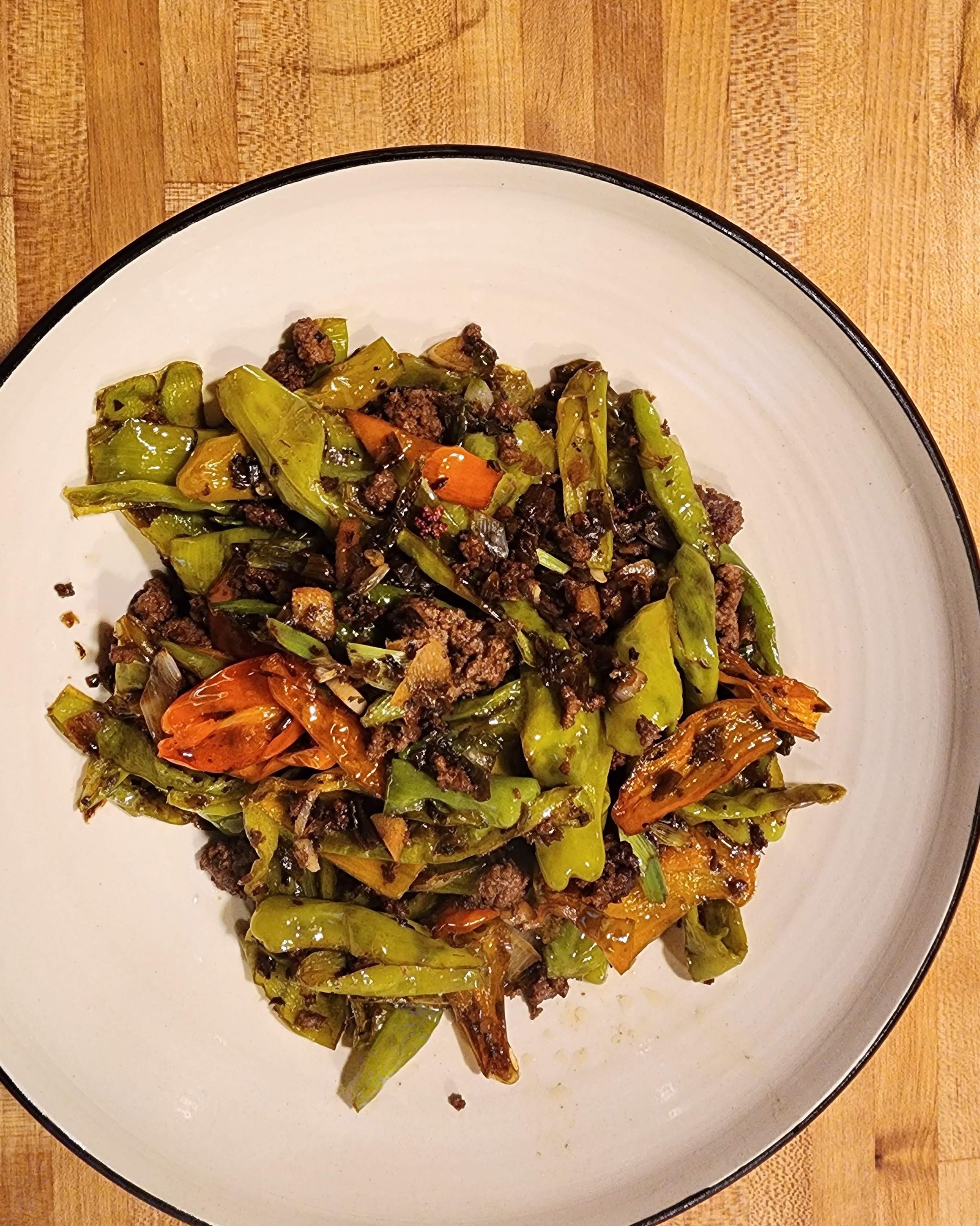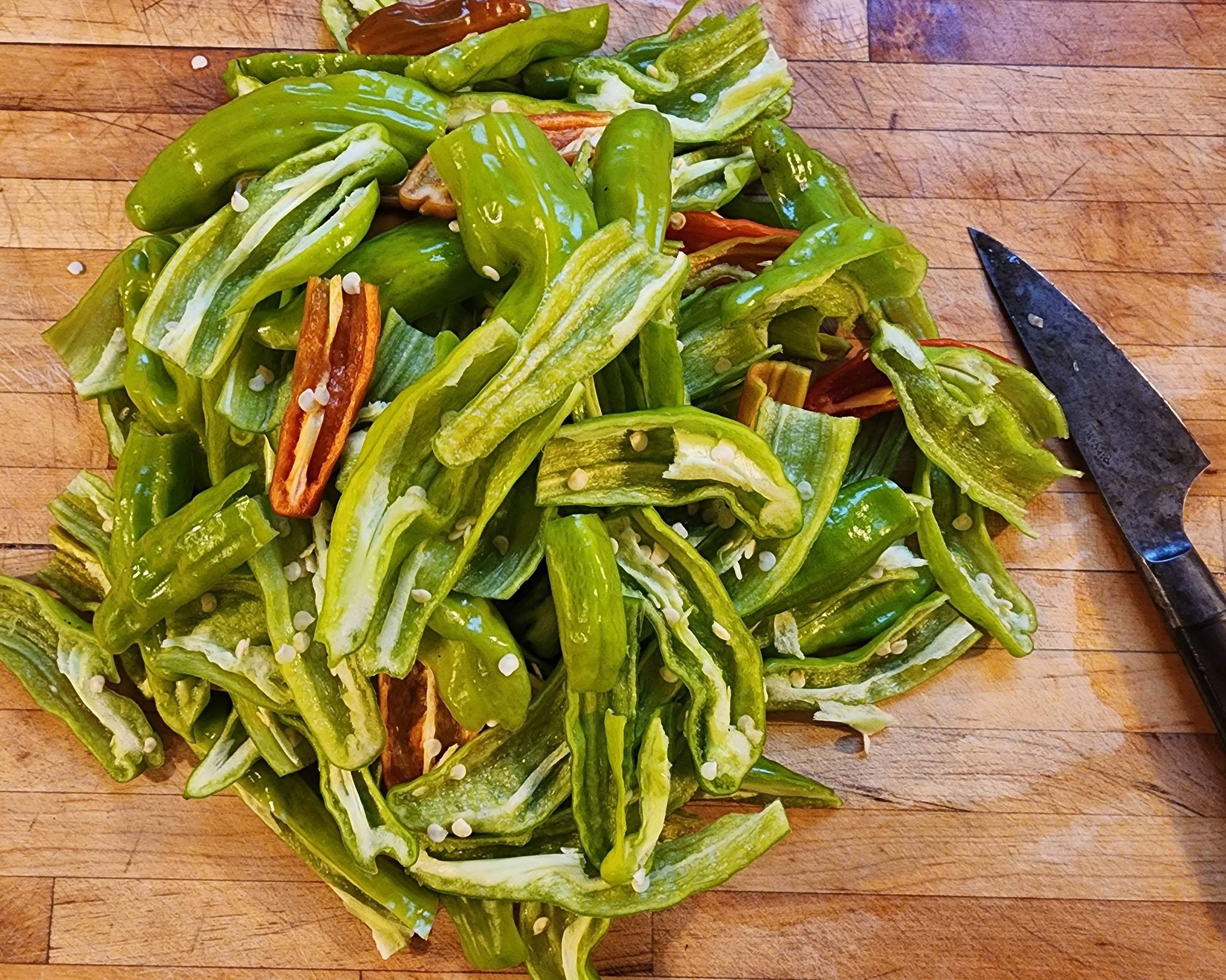A delicious, sweet and savory, way to prepare Asian eggplants adapted from the Woks of Life.
Ingredients
1 pound, Asian eggplants
4 oz ground pork or chicken (optional)
5-10 dried red chilies
2 scallions
2 tsp minced ginger
2 tbsp minced garlic
1/2 cup hot water
1 tbsp sugar
1 tbsp cornstarch
1.5 tbsp oyster sauce
1 tbsp rice vinegar
1 tbsp Shaoxing wine
1 tbsp light soy sauce
1 tsp sesame oil
1/2 tsp dark soy sauce
1/8 tsp white pepper
In a small bowl, add the hot water and stir in the sugar to dissolve. Then add the cornstarch, oyster sauce, rice vinegar, Shaoxing wine, light soy sauce, sesame oil, dark soy sauce, and white pepper. Stir in half of the garlic, and set this mixture aside.
When you’re ready to cook, trim the ends off the eggplants and cut them on an angle, rotating the eggplant with each cut, into triangular bite-size chunks. (Don’t leave them out too long, or they will turn brown.)
Heat a wok over medium-high heat until it’s smoking lightly, then pour 1½ tablespoons of neutral oil around the perimeter of the wok to evenly coat it with oil. Spread the eggplant in a single layer, reduce the heat to medium, and cook for 3 to 4 minutes, flipping and stirring occasionally, until the eggplant is lightly browned. Spread another 1½ tablespoons of neutral oil around the perimeter of the wok. Continue cooking the eggplant for another 4 minutes, stirring occasionally, until evenly seared, soft, and slightly translucent. Remove the eggplant from the wok and set on a plate.
Increase the heat to high and add 1½ tablespoons of neutral oil to the wok. Add the ground pork (if using) and cook until opaque, breaking it up into small bits as you go. Add the ginger, dried chilies, and the remaining tablespoon of garlic. Cook for 1 to 2 minutes, stirring constantly, until the aromatics are toasted and fragrant.
Add the eggplant back to the wok, and stir-fry until combined. Stir the sauce again to ensure the cornstarch is well combined with the liquid, then add it to the wok. Mix well and bring to a simmer, cooking until the sauce is just thick enough to coat a spoon. Stir in the scallions and serve immediately.










